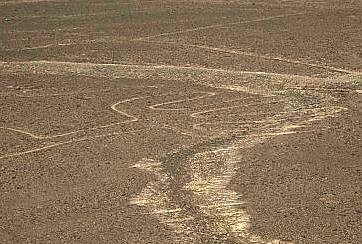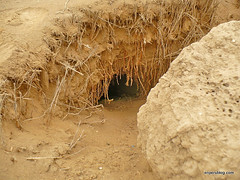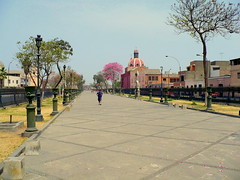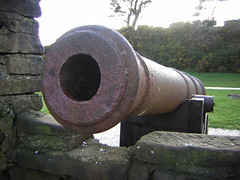Hans Heinrich Brüning
Hans Heinrich Brüning Brookstedt lives on through his museum in the town of Lambayeque in northern Peru. This Peruvian archaeologist of German origin, born in 1848, travelled to Peru in in 1875 to find work on the Pátamo estate.
 With no real interest in the archaeology or anthropology beforehand, he started visiting the nearby large haciendas to see the ruins on their grounds. Bringing along his camera, he was probably the first to document most sites in the region. His collection includes more than 2000 photos (mine includes almost 10,000 of Peru – but I’m not bragging). Thanks to Brüning we have a record of how many of the now totally destroy ruins looked when they were only partially destroyed more than 100 years ago.
With no real interest in the archaeology or anthropology beforehand, he started visiting the nearby large haciendas to see the ruins on their grounds. Bringing along his camera, he was probably the first to document most sites in the region. His collection includes more than 2000 photos (mine includes almost 10,000 of Peru – but I’m not bragging). Thanks to Brüning we have a record of how many of the now totally destroy ruins looked when they were only partially destroyed more than 100 years ago.
As well as taking photos of ruins and locals, Brüning began buying and collecting archaeological pieces grave-robbed by locals. His photos and purchased objects now make up the collection in the Brüning Museum in Lambayeque.
His interests eventually turned to language and he became extremely interested in the Mochic indigenous language of northern Peru. Over several years Puerto Eten region south of Chiclayo, he slowly gained the confidence of the maltreated plantation-working indigenous locals, spending much of his time with them, sharing their homes and food. His studies lead to the publication of a Mochic dictionary in 1917 and recordings of Mochic songs on wax cylinders, both permanently recording this dying language for future generations.
Brüning sold his growing collection of artefacts to the Peruvian state in 1916 which were placed in a museum he was made director of for 4 years, until aged 77, when he become sick and returned to Germany, dying there aged 80.
Brüning’s Photos –
Tags: 1800s, 1900s, Archaeology, bruning, hacienda, lambayeque, mochic, museum, photography, puerto eten, ruins









